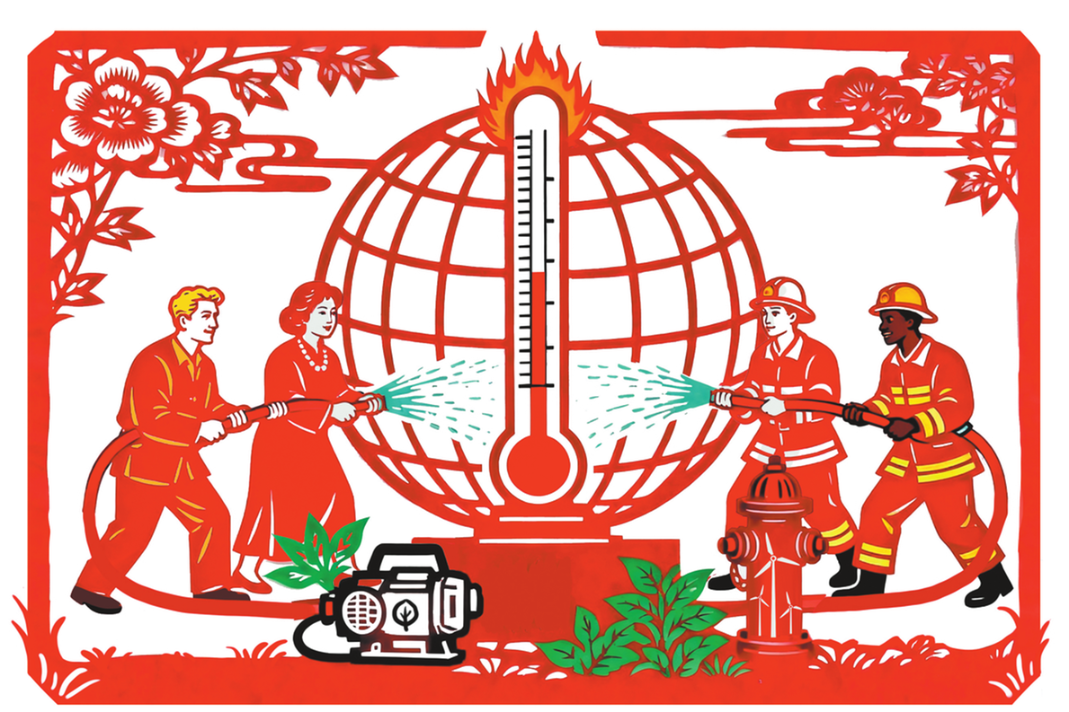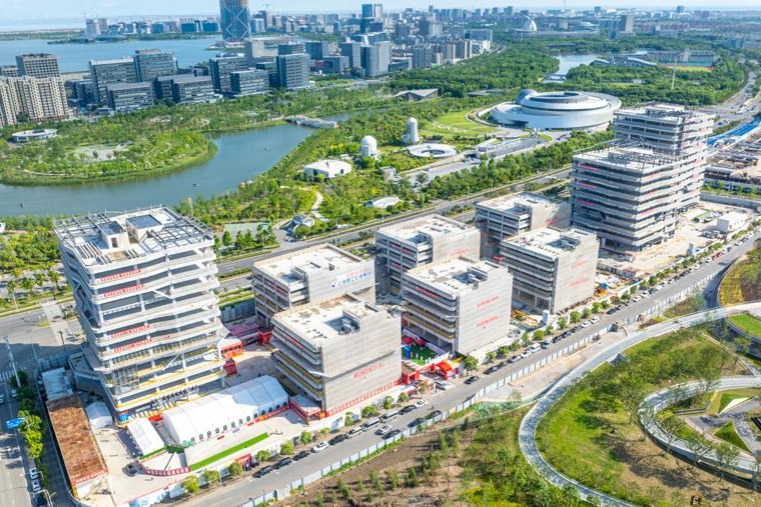Sinking emissions
Tapping the potential of forest carbon sequestration projects can help realize the net-zero goal

Tapping the potential of forest carbon sequestration projects can help realize the net-zero goal

China, representing one of the emerging economies, stands out as one of the pioneering developing nations to engage in international forest carbon sequestration projects since the 2000s. At a time when global climate governance is undergoing major transformation, China is increasingly taking on a more significant responsibility in global climate governance.
Forest carbon sequestration — the process of using afforestation, forest management and forest protection to absorb carbon dioxide from the atmosphere and store it in plants and soil, so as to reduce the carbon intensity in the atmosphere — has a critical role to play in achieving the goal of global netzero emissions. China's participation in international forest carbon sequestration projects, a vivid example of the country's participation in global climate governance, has reflected a change in its role in such cooperation and provided reference for China to participate in and promote climate cooperation among countries involved in the Belt and Road Initiative.
The development of China's forest carbon sequestration projects is undergoing a major transformation alongside the profound changes taking place in global climate cooperation.
At the global level, from the Tokyo Protocol to the Paris Agreement, the international climate cooperation mechanism — known as the Clean Development Mechanism (CDM) that divides the participants into the developed countries and the developing countries — is becoming irrelevant. Whether developing countries such as China can be deemed as the hosting nation of CDM programs has aroused controversy. Since May 2015, with the conclusion of the first commitment period of the Kyoto Protocol, China has seen no new forest carbon sequestration projects successfully registered under the CDM, and the existing projects have also stagnated with no new buyers emerging. On the other side of the equation, China has been advancing its domestic emissions trading mechanism and launched the national carbon emissions trading market in 2022, providing yet another platform for the development of China's forest carbon sequestration projects.
Specifically, the development of China's forest carbon sequestration project is faced with three major transformation trends.
To start with, the trading condition for China's forest carbon sequestration projects is evolving from the international market dominated by global cooperation projects toward the domestic market under China's national carbon trading market.
China's forest carbon sequestration projects will possibly witness yet another round of rapid growth after experiencing sluggish growth in CDM projects. However, since China's carbon trading market is still in its infancy, the quota allotted to emissions-restrictive industries and standards are being explored and adjusted. Thus, the room left for voluntary emissions reduction trade remains to be seen. The China Certified Emission Reduction (CCER) program, a voluntary program in which participants can trade carbon credits, was first launched in 2012 and suspended in 2017. During the five years of operation, in general, the supply exceeded demand in the trade of forest carbon sinks and the price was relatively low.
Second, the policy focus for forest carbon sequestration projects is changing from global emissions reduction trading to integral involvement in China's national ecological development.
The goal of China's forest carbon sequestration projects is also changing from purely addressing climate change to accomplishing multiple targets involving poverty alleviation, ecological compensation and the realization of ecological products value, among others. The trade is evolving from international cooperation projects led by the National Development and Reform Commission toward a policy tool used for ecological construction by a number of commissions and departments in a coordinated manner.
On Sept 25, the General Office of the Communist Party of China Central Committee and the General Office of the State Council, China's Cabinet, jointly issued the Plan for Deepening the Reform of the Collective Forest Rights System, which emphasizes support for eligible forestry carbon sequestration projects.
In the plan issued by China on Sept 25, detailed discussions were provided on various aspects, including the forestry carbon sequestration measurement and monitoring system, forestry carbon sequestration market trading mechanisms, forestry carbon sequestration ecological compensation mechanisms, and legislative supervision mechanisms related to forestry carbon sequestration.
Third, China's accumulation of knowledge and experience in forest carbon sequestration projects has progressed from passive acceptance to active reshaping and sharing.
Compared with other emissions trading projects such as solar, wind, hydro projects, forest carbon sequestration projects are unique in that they involve a large number of rural households in a forest community and will bring about changes to the traditional livelihood of local communities. However, research indicates that CDM forestry carbon sequestration projects are typically implemented in remote and economically disadvantaged forestry areas, making them prone to local livelihood conflicts, and often resulting in deviations from project objectives.
According to the author's field research in China's Sichuan province on forest carbon sequestration projects from 2016 to 2018, some communities combined the promotion of carbon sequestration programs with the transformation of natural resource utilization, which successfully balanced the accomplishment of multiple goals including carbon credit trading, poverty reduction, sustainable livelihoods, and biodiversity protection. By summarizing and analyzing the practices of forest carbon sequestration projects in developing countries, China can have experiences and lessons to share with other countries when promoting international cooperation for green development in the BRI participating countries, and the establishment of new mechanisms for climate cooperation among developing countries.
Based on the above three trends, the following recommendations are proposed:
First, driven by the carbon peak and neutrality goals, China has introduced a range of policies to robustly support the development and trade of forest carbon sequestration projects. However, it should also exercise caution to avoid "overheated" expansion of such programs and the fostering of overly high expectations regarding their returns.
Second, aside from increasing carbon credits, the value of forest carbon sequestration projects in terms of poverty alleviation, community development and biodiversity protection needs to be fully supported by the policy.
For instance, during China's poverty alleviation campaign, the NDRC and the Ministry of Ecology and Environment successively unveiled policies to support the carbon trading market including impoverished areas' forest carbon sequestration projects into the market with a higher priority and encouraged carbon trading compliance enterprises and entities to pair up with poor areas to purchase such programs. These have provided a stellar example of using such programs for advancing poverty alleviation.
Last, the practical experience of forestry carbon sequestration projects in developing countries need to be promoted.
In the years to come, China needs to summarize its experiences in forest development, improve the scientific plan and know-how for the development and trade of forest carbon sequestration projects, and vigorously promote experience sharing and knowledge communication among developing countries on forest carbon sink trade. These moves will advance the joint construction of a green Belt and Road and steer global climate governance in a more inclusive and equitable direction.
Ba Feng is a lecturer with the College of Humanities and Development Studies at China Agricultural University. Zhang Minghui is an associate researcher with the College of Economics and Management at Nanning Normal University. The authors contributed this article to China Watch, a think tank powered by China Daily.
Contact the editor at editor@chinawatch.cn


































